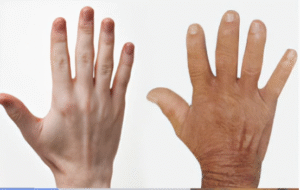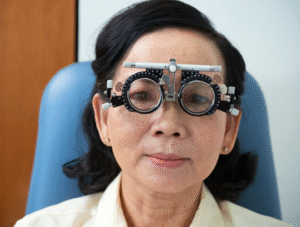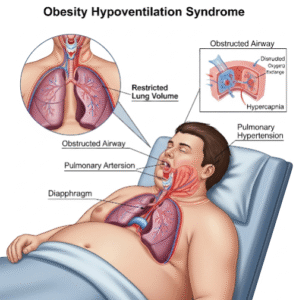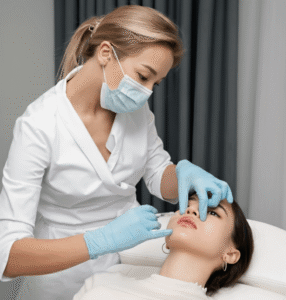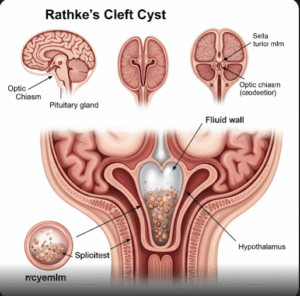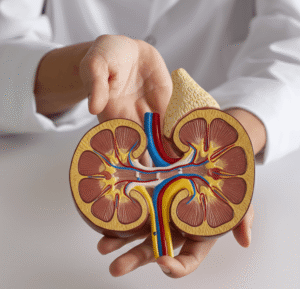➤ Overview
Travel sickness, also known as motion sickness, is a common condition caused by discrepancy between sensory signals received by the brain from the inner ear, eyes, and muscles during motion. It often occurs during car rides, boat trips, airplane flights, or amusement park rides.
In South Korea, travel sickness is evaluated by general practitioners, ENT specialists, and neurologists, depending on the severity and frequency. Diagnostic assessment focuses on history, symptom patterns, and ruling out vestibular or neurological disorders. Early management can reduce discomfort, prevent vomiting, and improve travel experience.
➤ Key Facts
→ Travel sickness affects all ages but is most common in children and women.
→ Symptoms are triggered by motion and imbalance in sensory perception.
→ In Korea, preventive strategies and medications are widely used to manage symptoms.
→ Commonly experienced during cars, boats, planes, and amusement rides.
→ Untreated motion sickness can lead to vomiting, dehydration, and fatigue.
→ Lifestyle strategies can significantly reduce severity of travel sickness.
→ Severe or persistent cases may indicate vestibular or neurological disorders.
➤ What is Travel Sickness?
Travel sickness is a condition characterized by nausea, dizziness, and discomfort during motion:
→ Sensory conflict theory – The brain receives conflicting signals from the inner ear, eyes, and proprioception.
→ Physiological response – Triggers nausea, vomiting, pallor, and sweating.
→ Types of motion – Car sickness, sea sickness, air sickness, and virtual reality sickness.
→ Temporary condition – Symptoms usually resolve after motion stops.
→ Functional impact – Can interfere with travel, work, or leisure activities.
→ Indicator of vestibular sensitivity – Some individuals are more prone due to inner ear sensitivity or prior history.
➤ What Symptoms are Related to Travel Sickness?
Symptoms of travel sickness may vary in severity:
→ Nausea and vomiting → Core symptoms that can lead to dehydration.
→ Dizziness or vertigo → Sensation of spinning or imbalance.
→ Pale skin and sweating → Autonomic response to motion-induced stress.
→ Headache or fatigue → Often accompanies nausea and dizziness.
→ Rapid heartbeat or palpitations → Stress-related physiological response.
→ Loss of appetite → Common during motion or after vomiting.
→ Cold hands or feet → Circulatory reaction to motion stress.
→ General malaise → Feeling unwell or lightheaded.
➤ What Causes / Possible Causes?
Travel sickness arises from conflicting sensory input, neurological sensitivity, and other triggers:
→ Sensory mismatch – Eyes may see stationary objects while the inner ear senses motion.
→ Vestibular sensitivity – Inner ear structures are highly responsive to motion.
→ Visual input – Reading or focusing on a screen during travel can worsen symptoms.
→ Genetic predisposition – Family history increases susceptibility.
→ Hormonal factors – Women may be more prone due to hormonal fluctuations.
→ Motion intensity – Rough seas, winding roads, or turbulence increases likelihood.
→ Previous history – Individuals who experienced severe motion sickness as children may be more prone.
→ Neurological disorders – Rarely, migraine-associated vertigo or vestibular disorders contribute.
➤ When Should I See My Doctor?
Medical consultation is recommended if travel sickness:
→ Occurs frequently despite preventive measures – Suggests high susceptibility or underlying vestibular disorder.
→ Causes severe vomiting or dehydration – Requires medical intervention.
→ Is associated with vertigo outside of travel – May indicate vestibular or neurological conditions.
→ Persists beyond childhood or adolescence – Could reflect chronic sensitivity.
→ Interferes with daily life or travel – Reduces quality of life.
→ In Korea, doctors assess history, frequency, triggers, and may perform vestibular testing to rule out underlying causes.
➤ Care and Treatment
Management depends on prevention, symptom control, and addressing underlying susceptibility:
→ Lifestyle and behavioral strategies →
→ Sit in a stable area of transport (front seat in car, midship on a boat).
→ Focus on the horizon or external stationary objects.
→ Avoid reading or looking at screens during motion.
→ Maintain adequate ventilation and fresh air.
→ Dietary measures →
→ Eat light, bland meals before travel.
→ Avoid alcohol, greasy, or heavy foods.
→ Medication →
→ Antihistamines (e.g., dimenhydrinate) to prevent nausea.
→ Scopolamine patches for prolonged travel.
→ Ginger supplements for mild cases.
→ Acupressure or wristbands → Pressure points can reduce nausea.
→ Gradual exposure therapy → Gradually increasing tolerance to motion can reduce severity over time.
➤ Treatment Options in Korea
South Korea provides advanced diagnostic and preventive strategies for travel sickness:
Diagnosis in Korea
→ Medical history assessment – Identify frequency, triggers, and severity.
→ Vestibular testing – Evaluate inner ear function and balance.
→ Neurological examination – Rule out migraines or vestibular disorders.
Medical Treatments in Korea
→ Prescription medications – Antihistamines, scopolamine, or antiemetics tailored to individual needs.
→ Nutritional and herbal support – Ginger-based therapies and dietary counseling.
→ Behavioral counseling – Guidance on posture, gaze stabilization, and relaxation techniques.
Advanced Therapies in Korea
→ Vestibular rehabilitation – Exercises to improve inner ear function and balance.
→ Biofeedback and relaxation therapy – Reduce motion-induced anxiety and autonomic response.
→ Multidisciplinary care – ENT specialists, neurologists, and therapists collaborate for severe cases.
Rehabilitation & Support in Korea
→ Follow-up monitoring for recurrent symptoms.
→ Education on preventive measures, lifestyle modifications, and medication use.
→ Support for frequent travelers or patients with vestibular sensitivity to maintain quality of life.



